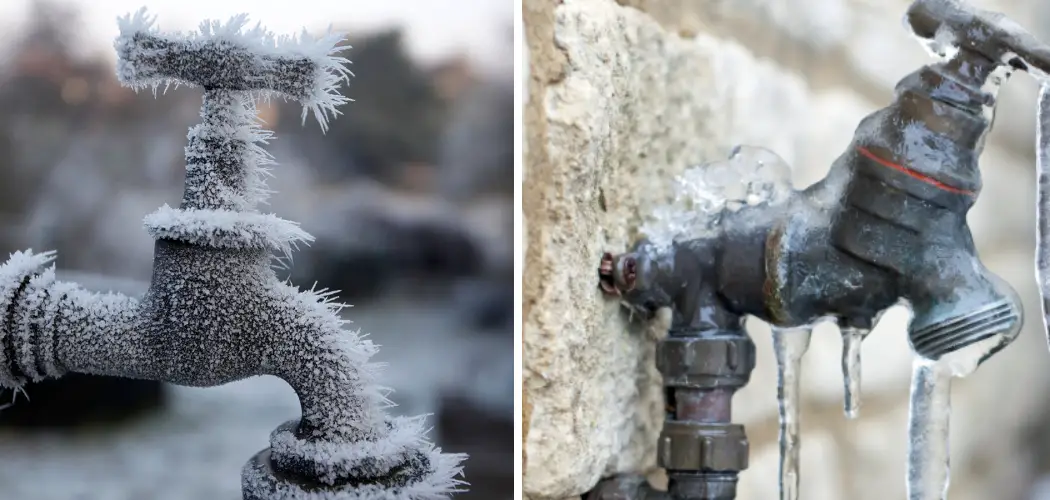As the weather turns colder, one of the most important steps homeowners need to take is winterizing their water pipes. By taking some proactive measures now, you can make sure your pipes stay in great condition this season and avoid any costly bills due to frozen or burst pipes during the cold months.
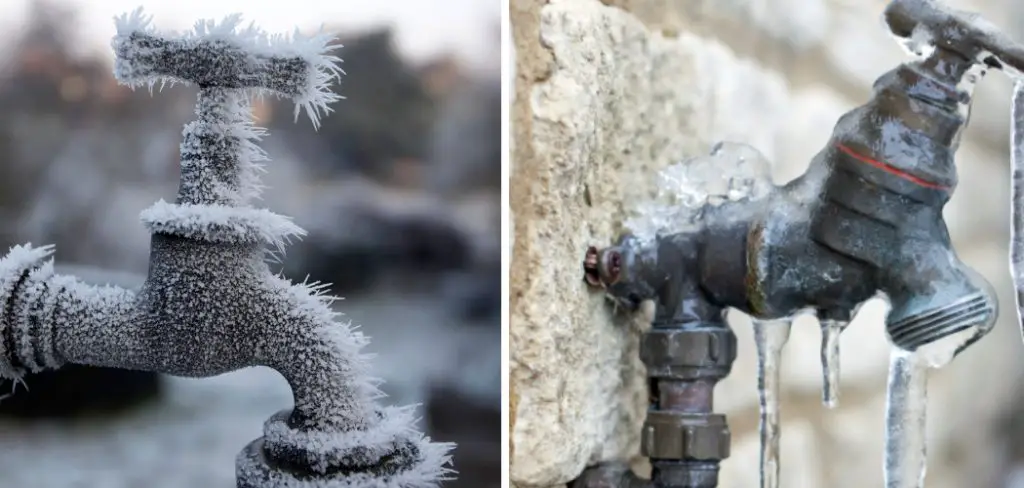
In this blog post, we’ll give you all the info you need to know about how to winterize water pipes so that you can keep them running smoothly until spring arrives!
Why is Winterizing Water Pipes Important?
Before we dive into the steps of winterizing water pipes, let’s first understand why it’s important. During the colder months, water can freeze inside your pipes, causing them to expand and potentially burst or crack.
This not only leads to a lack of running water in your home but also results in expensive repairs and water damage. By winterizing your pipes, you can prevent this from happening and ensure that your plumbing system stays in good condition.
Supplies You Will Need to Winterize Water Pipes
- Pipe Insulation
- Heat Tape or Heat Cables
- Caulk and/or Weather Stripping
- Hose Bib Covers
- Drainage Pipe Cleaner
- Pipe Sleeves or Newspaper
Step-by-step Guidelines on How to Winterize Water Pipes
Step 1: Insulate all Exposed Pipes
Begin by inspecting all the pipes in your home, both inside and outside. Pay special attention to those in unheated areas such as basements, crawl spaces, attics, and garages. Use pipe insulation sleeves or wrap them with heat tape or heat cables. These supplies are easily available at any hardware store. Insulating exposed pipes will help prevent them from freezing and bursting.
Step 2: Seal Any Cracks or Gaps
Check for any cracks or gaps around your home’s foundation, windows, doors, and vents. These can let cold air in and cause the temperature inside to drop significantly. Use caulk or weather stripping to seal any openings and keep your home warm. This will also help conserve energy and lower your heating bills.
Step 3: Drain Water from Outdoor Pipes
Outdoor pipes are particularly vulnerable to freezing, so it’s crucial to drain them before the temperatures drop. Disconnect and drain all garden hoses and store them indoors for the winter.
Then shut off the water supply to outdoor faucets and open the valves to allow any remaining water to drain out. Finally, cover your outdoor faucets with a hose bib cover for added protection.
Step 4: Clean Out Any Drainage Pipes
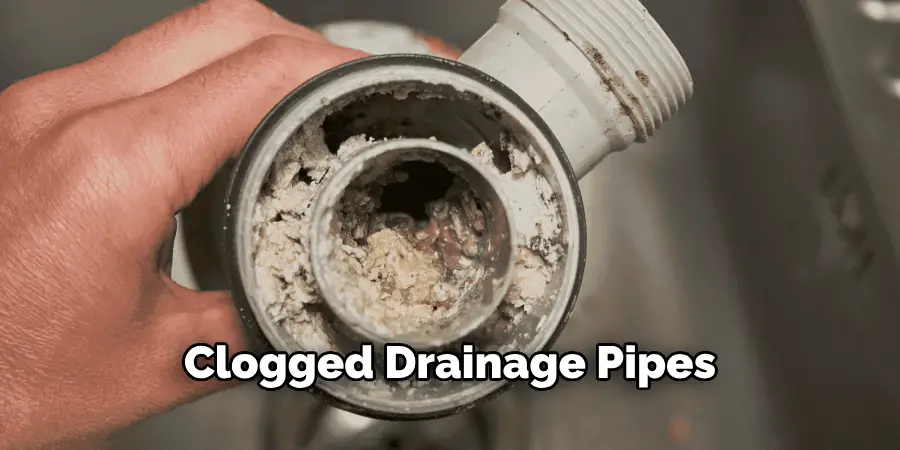
Clogged drainage pipes can also cause issues during the winter. To prevent this, use a drain cleaner to clear any debris or build-up in your pipes before the cold weather hits. This will help ensure proper drainage and prevent water from freezing inside the pipes. Make sure to follow the instructions on the cleaner and use it safely.
Step 5: Protect Pipes in Unheated Areas
For pipes in unheated areas like crawl spaces or garages, extra precautions are necessary. Use pipe sleeves or wrap them with newspaper for added insulation. Make sure that all cracks and gaps in these areas are also sealed properly. You can also leave the cabinet doors open in your kitchen and bathroom to allow warm air to circulate around these pipes.
Following these steps will help you effectively winterize your water pipes and prevent any potential damage. It’s important to do this before the temperature starts to drop significantly, so don’t wait until it’s too late! Stay proactive and save yourself from expensive repairs and headaches.
Additional Tips and Tricks to Winterize Water Pipes
1. Consider installing pipe insulation to protect pipes from freezing temperatures. Pipe insulation is an inexpensive and easy way to keep your pipes warm during the winter months.
2. Make sure to check for any leaks or cracks in your water pipes before winter arrives. Fixing any existing issues beforehand can prevent major problems later on.
3. Keep your home at a consistent temperature, even if you are away. This will help to keep your pipes from freezing.
4. If you have outdoor faucets, make sure to shut off the water supply and drain any remaining water before winter arrives. Use an insulated faucet cover for added protection.
5. Consider investing in a programmable thermostat that can adjust the temperature according to your schedule and prevent unnecessary heat loss.
6. Open cabinet doors under sinks to allow warm air to circulate around pipes located along exterior walls.
7. Keep your garage door closed during extremely cold weather, especially if there are water supply lines in the garage. This will help to maintain a warmer temperature and prevent freezing.
8. When going on vacation during winter, make sure to leave your heat on at a minimum of 55 degrees Fahrenheit to prevent frozen pipes.
9. If you plan on leaving your home for an extended period of time, consider turning off the main water supply and draining all pipes to prevent any potential damage from frozen pipes.
10. It’s always a good idea to have a plumber inspect your water pipes before winter arrives. They can identify any potential issues and offer solutions to prevent problems during the colder months.
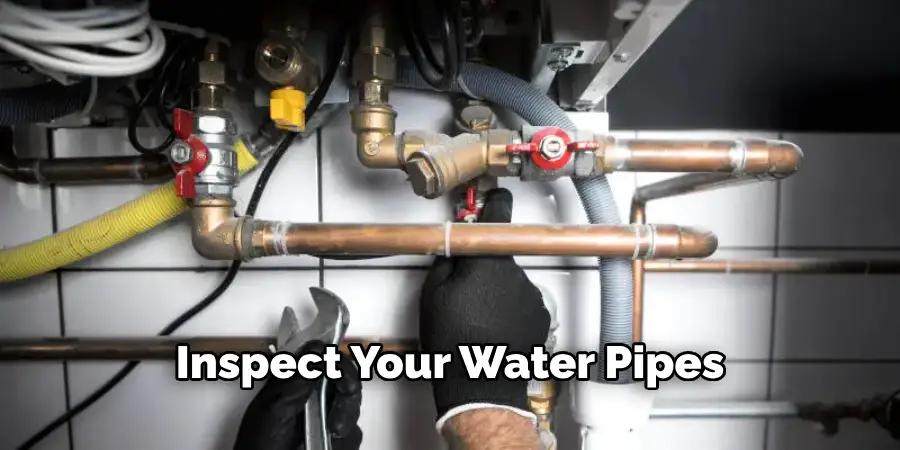
With these additional tips and tricks, you can rest assured that your water pipes will be well-protected during the winter season. By taking proactive measures, you can avoid costly repairs and ensure a steady supply of water throughout the colder months. Stay warm and safe!
Things You Should Consider to Winterize Water Pipes
1. Consider the Location of Your Water Pipes:
The first thing you should consider before winterizing your water pipes is their location. Some pipes may be exposed to colder temperatures than others, which can increase the likelihood of them freezing and bursting. It’s important to identify these vulnerable pipes so that you can take extra precautions to protect them.
2. Insulate Your Pipes:
Insulating your pipes is a crucial step in winterizing them. This can be done using pipe insulation sleeves or by wrapping them with heating tape. Insulation helps keep the pipes warm, preventing them from freezing and potentially bursting. It’s important to check for any damaged insulation and replace it before winter arrives.
3. Locate and Shut Off Main Water Valve:
In case of any emergencies, it’s important to know where your main water valve is located and how to shut it off. This will prevent water from continuously flowing through your pipes in the event of a burst pipe. The main water valve is usually located near the water meter, but if you’re unsure, contact a plumber for assistance.
4. Drain Water Supply Lines:

Before winter sets in, it’s important to drain your water supply lines. This includes outdoor hoses, sprinkler systems, and any other water supply lines that won’t be used during the winter. Failure to do so can result in frozen pipes and potential damage.
5. Keep the Heat On:
If you plan on leaving your home for an extended period during the winter, it’s important to keep the heat on. This will help prevent pipes from freezing and bursting while you’re away. You don’t need to keep the temperature as high as you would when you’re at home, but maintaining a minimum temperature of 55 degrees Fahrenheit is recommended.
6. Consider Using a Space Heater:
For pipes that are particularly vulnerable to freezing, consider using a space heater in addition to other measures of insulation. This can provide extra heat to keep the pipes warm and prevent them from freezing. However, make sure to use space heaters with caution and follow all safety precautions.
7. Monitor for Leaks:
Even with proper winterization measures in place, leaks, and burst pipes can still occur. It’s important to regularly check your water pipes for any signs of leaks or damage. If you notice any issues, contact a plumber immediately to prevent further damage. This is especially important during periods of extreme cold weather.
8. Consider Installing a Water Detection System:
If you live in an area with extremely low temperatures, it may be worth investing in a water detection system for added protection. These systems can detect leaks and shut off the main water valve automatically to prevent further damage. They can also send alerts to your phone so that you can address the issue quickly.
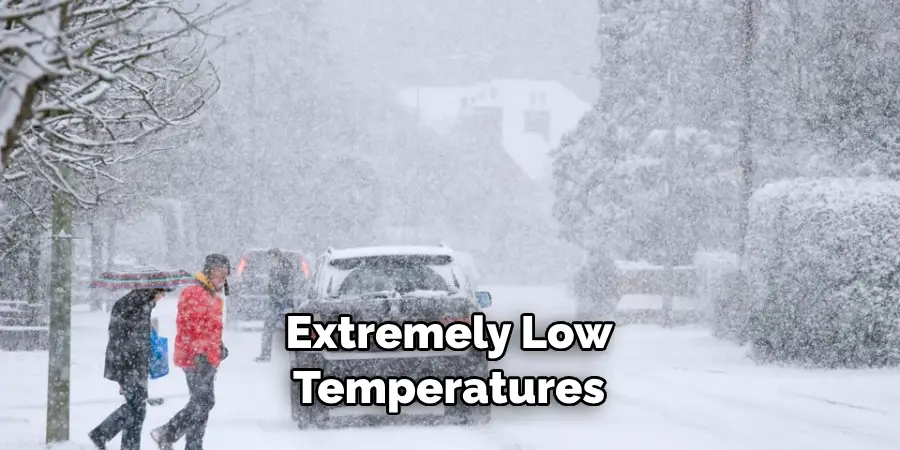
Following these considerations can help ensure that your water pipes are properly winterized and protected from potential damage. It’s important to take these steps before the cold weather hits to prevent costly repairs and inconvenience. Remember, prevention is better than a cure when it comes to protecting your water pipes during the winter season. So, don’t wait until it’s too late – start planning and preparing now!
Precautions Need to Be Followed for Winterizing Water Pipes
1. First and foremost, identify all the water pipes in your home. This includes both indoor and outdoor pipes.
2. Make sure that your pipes are properly insulated. Insulation will help prevent heat loss from the pipes and save you from any potential damage caused by freezing temperatures.
3. Drain all the water from your outdoor pipes, including garden hoses and sprinkler systems. If left with even a small amount of water, it could freeze and cause the pipes to burst.
4. Disconnect all outdoor hoses and store them in a warm area to prevent any damage from freezing temperatures.
5. Insulate indoor pipes that are located in unheated areas such as basements, attics, and crawl spaces. Use pipe sleeves or heat tape for added protection.
6. Seal any cracks or holes in the walls, floors, and foundation of your home. This will prevent cold air from seeping in and potentially freezing your pipes.
7. If you have a swimming pool or hot tub, make sure to drain all the water from the pipes and equipment. Use antifreeze specifically made for pools and hot tubs to prevent any remaining water from freezing.
8. Keep your home at a consistent temperature, even when you are away. This will help maintain the warmth and prevent pipes from freezing.
Following these precautions will ensure that your water pipes are properly winterized and protected from freezing temperatures. However, if you do experience frozen pipes, it is important to know how to thaw them safely.

Conclusion
Winterizing your water pipes should be a top priority for homeowners as the colder winter season approaches. Heading off potential damage now will save you a lot of hassle and money later on when temperatures drop below freezing. Choose an insulation material that you are comfortable using, and ensure it fits properly, and then you can confidently rest easy knowing that all necessary measures have been taken to prevent any costly future damages brought about by winter’s chill.
If, however, worse comes to worst and your pipes do freeze despite taking precautionary steps; reach out quickly to a professional plumber who can properly assess the problem and take the proper steps needed to fix it. So don’t wait until it is too late – follow our tips now and stay ahead of frozen pipes this Fall and winter! While weather conditions may be difficult to predict, your own preparation won’t be – As soon as Fall arrives it is time to get started on how to winterize water pipes!

